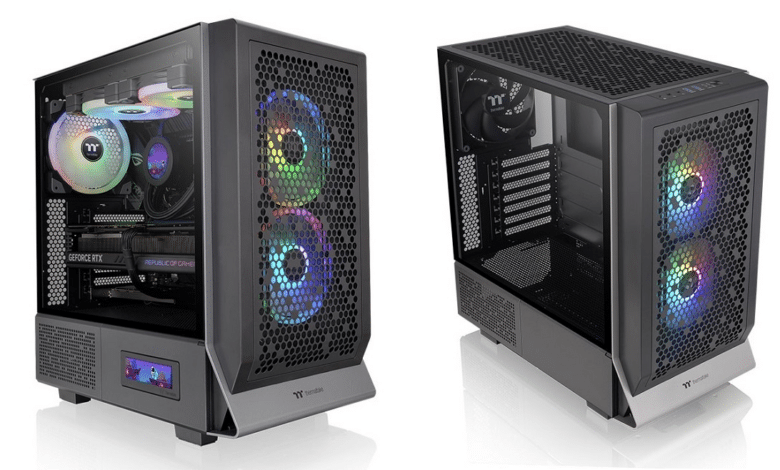
The manufacturer Thermaltake was founded in Taiwan in 1999 and develops, produces and sells processor coolers, power supplies and computer cases of all kinds worldwide. There is probably no hardware enthusiast who does not know the name Thermaltake. Since its founding, the manufacturer has never tired of developing new and visually striking mini, midi and big towers. Among them are the series “Level”, “Core”, “The Tower” or “Ceres”. As an extension of the latter series, Thermaltake introduced the Thermaltake Ceres 300 TG ARGB in June without much notice, which we have for you in the test today.
You can already tell from the name of the Thermaltake Ceres 300 TG ARGB that it is the smaller brother of the Ceres 500 TG ARGB. At first glance, not much has actually changed. Just the striking design of the front panel has remained. Overall, however, the Ceres 300 TG ARGB is quite a bit smaller and comes from the factory with a smaller number of fans. Nevertheless, the midi tower offers space for (E)ATX mainboards, large CPU coolers and relatively long graphics cards. There is also room for up to two radiators. With a price of € 89.90 *, Thermaltake sends the new midi tower into the race. The white variant of the Ceres 300 TG ARGB costs, as always, a bit more.
Technical details
| Model: | Thermaltake Ceres 300 TG ARGB |
| Case Type: | Midi Tower |
| Dimensions: | 245mm (W) x 475mm (H) x 463mm (D) |
| Weight: | 7.8 kg |
| Material: | Steel, plastic, tempered glass |
| Color: | Black |
| Front connectors | 1x USB-C 3.1 (10Gb/s), 2x USB-A 3.0, 1x headphone, 1x microphone |
| Drive bays: | 1x 3.5″ or 2x 2.5″ |
| Expansion slots: | 7x horizontal or 7x vertical (backplane is modular) |
| Form Factors: | ATX, µATX, ITX |
| Ventilation: | Front: 3x 120/ 2x 140 mm Rear: 1x 120/ 140 mm Lid: 3x 120/ 2x 140 mm |
| Radiators: | Front: 1x 120/ 240/ 280/ 360 mm Rear: 1x 120/ 140 mm Lid: 1x 120/ 240/ 280 mm |
| Max. CPU cooler height: | 185 mm |
| Max. Graphics card length: | 370 mm (without radiator), 340 mm (with radiator) |
| Max. Mains part length: | 220 mm (with fan in the bottom) |
| Cable management space: | 24 mm |
| Price: | € 89.90 * |
| Features: | Dust filter, cable management, 3x 140-mm pre-installed fans (2x of which are ARGB), tempered glass, modular backplate for expansion cards |
Thermaltake Ceres 300 TG ARGB review: the scope of delivery
As usual, Thermaltake ships the Ceres 300 in a plain box made of brown cardboard. In black color, the logo, some pictures of the case and a table with all the technical data were printed on it. In addition, a colored sticker was stuck on the packaging, which explicitly points out that two ARGB fans are installed in the Ceres 300 TG ARGB. Furthermore, we find a hint on the cardboard box whether the white or black version of the case can be found inside.
Inside, Thermaltake wraps the midi tower with a sheet of plastic as well as two blocks of traditional Styrofoam. The manufacturer places the assembly accessories in a small brown box, which was attached to the front of the motherboard tray with a cable tie. The contents of the box are an installation guide, some cable ties, and a bag with all the necessary mounting screws. Also included are three pre-installed 140mm fans and three dust filters for the front, top and bottom.
Exterior impression
Visually, the Ceres 300 bears a lot of resemblance to the Ceres 500, but one difference is that all elements of the front panel here are made of plastic. The design is made for high airflow due to many large, round vents. However, not all of the openings were punched out in order to visually stand out a bit from the crowd. In the lower area, we then find a silver, made of plastic, bulge, which reminds a bit of the front skirt of a car and was led along the body towards the top. Thus, the Thermaltake Ceres 300 TG ARGB is no longer inconspicuous.
Behind the grille, Thermaltake places a fine-mesh dust filter that is supposed to protect the interior as well as the two pre-installed 140mm fans from dust and is locked in place via magnets. In order to reach the corresponding mounting rails as well as the dust filter, the front panel has to be pulled off with a strong jerk. Alternatively, three 120 mm fans or a 360 mm radiator can be installed on the front.
The lid section of the Ceres 300 was also designed for high airflow. It features a large fan grill with various rails for optional 120mm or 140mm fans. The rails have also been moved outwards to allow a radiator to be mounted in the lid.
To unify the look, Thermaltake places a perforated plastic panel with built-in dust filter above the grille, which has the same design as the front panel. Magnets are used for mounting here as well. Furthermore, Thermaltake places the I/O panel in the front area of the lid. It offers one USB-C 3.2 port as well as two USB-A 3.0 ports and an HD audio combo port. Of course, there is also a power and reset button here.
The left side panel of the Ceres 300 is made of a 4 millimeter thick tempered glass, which has been only very lightly tinted. The glass is glued to a steel frame to simplify the assembly of the entire panel. It only has to be fixed with two knurled screws on the back. The lower area of the left side is made of steel and has ventilation openings in the back. The right side panel is classically made of steel and is also mounted with the help of two thumbscrews. The material thickness was chosen solidly. Ventilation openings are also found here in the lower right area, both of which have been equipped with a small magnetic dust filter frame ex works.
The rear panel shows an appearance typical for midi-towers. The power supply is placed at the very bottom and above it, a total of seven reusable slot bezels can be seen. These also have numerous ventilation openings. Thumbscrews are used throughout for mounting, but they are very tightened at the factory. In the upper area we find the cutout for the I/O shield of the motherboard as well as the third 140 mm fan. At the rear, however, Thermaltake has dispensed with ARGB lighting for the fan.
What is particularly worth mentioning about the rear panel, however, is that with the removal of a few screws, the slot bracket area can be rotated 90 degrees. This allows a graphics card to be mounted vertically if an optional riser cable is present. The latter is not included with the Ceres 300 from the factory. Nevertheless, it is very commendable that you don’t have to buy a corresponding frame in addition to the riser cable for the vertical mounting of the graphics card. Moreover, the implementation allows a variable placement of the graphics card.
At the bottom of the Thermaltake Ceres 300 TG ARGB can be seen four sturdy feet made of plastic, each of which was covered with a strip of foam rubber to protect the base. Thermaltake also places a fine-mesh dust filter on the bottom, which can simply be pulled out to the front for disassembly. Afterwards, you get a free view of the also heavily perforated underside of the midi tower. In addition to the ventilation opening for the power supply, there is also a mounting space for an optional 120 mm or 140 mm fan on the underside.
Interior Impression
Thermaltake divides the interior of the Ceres 300 into two different sized chambers. The upper and significantly larger chamber accommodates an ATX or EATX motherboard and features six different sized cable management openings, the two largest of which have also been fitted with rubber sleeves. However, an EATX mainboard would clearly overhang or cover the large, rubberized cable management openings.
At the front of the interior, you get an unobstructed view of the back of the two pre-installed fans. These can move air into the interior unhindered due to the lack of hard drive slides or cages. The third fan at the back then blows the heated air back out. Unfortunately, Thermaltake spares itself the use of an ARGB variant here. Perforations below the fan also provide additional air circulation.
As you could already guess from the outside, the division of the two chambers is done with the help of a power supply cover. This covers almost the entire lower area, but has a large ventilation grille and three cable management openings. Towards the front, a cutout can also be seen, which should allow the installation of a 360 mm radiator.
Under the cover there is unrestricted space for the PSU, which can be placed on two elongated strips of foam rubber to reduce vibrations. The generous amount of space is mainly due to the fact that, unlike the Ceres 500, Thermaltake does not include a full HDD cage in the PSU tunnel. Good for the maximum length of the PSU and for the placement of superfluous cables, bad for the amount of installable data carriers.
Since the mainboard tray was designed flat, there are logically no bulges or a special cable channel at the back. Nevertheless, there is plenty of room for cables here with about 26 millimeters. In addition, Thermaltake has installed four reusable cable ties with Velcro to easily tie down all cables. Of course, there are also conventional steel eyelets for normal cable ties. Both should provide a reasonable bundling of the cables and thus a neat appearance in combination.
Unfortunately, the airy design of the Ceres 300 TG ARGB comes with a bit of a drawback. This midi tower doesn’t offer a lot of space for data media. The only possible mounting point is found at the back of the motherboard tray. The corresponding steel frame offers space for a single 3.5″ or two 2.5″ HDDs/ SSDs. The mounting is done with a screwdriver and conventional screws. The frame does not offer a decoupling of the data media.
Workmanship
The workmanship of the Thermaltake Ceres 300 TG ARGB leaves little room for criticism. Overall, the material impression or components can be rated as good to very good. The use of plastic is kept within limits and the steel used has a decent strength for the most part. Only the ventilation grille in the lid and that of the power supply cover could have used a bit stronger steel. Furthermore, the plastic filter in the lid looks a bit rickety.
In return, we couldn’t find any sharp edges or paint defects. Lastly, it should be mentioned that there was only a very slight or barely visible color difference between the steel and plastic elements used in our black version.
Thermaltake Ceres 300 TG ARGB review: component installation
Now we come to the system installation in the Thermaltake Ceres 300 TG ARGB test. For hardware, we are using an AMD Ryzen 5 1400* on a ASUS TUF Gaming B550M-Plus* with 16GB Crucial Ballistix Sport LT gray DDR4-2666*. The Ryzen is cooled by an Alpenföhn Brocken 4* and is overclocked to 3.8 GHz (1.175 V). A Gigabyte AORUS GTX 1060 6GB is responsible for the image output. The power supply is handled by the fully modular LC-Power LC550 V2.31 Platinum*.
Additionally, we were provided with Thermaltake’s new TH280 V2 ARGB AiO water cooler for the test. This features a 280mm radiator, illuminated ARGB fans (CT140 ARGB) and a pump block with the manufacturer’s logo illuminated as well as Infinity mirror optics. For illustration purposes, the radiator was mounted in the lid and coupled with the pre-installed ARGB fans. However, the later stress test was performed with an air cooler. You can find a detailed review of the Thermaltake TH280 V2 ARGB here on the blog soon.
Regardless of the air or water cooler, installation of all components was very simple and quick. Thermaltake has nine spacers pre-installed at the factory for an ATX motherboard. This saves a lot of time when assembling the actual system. Also well thought out is the cable management system as well as the placement of the Velcro strips on the back of the motherboard. Together with the sensibly placed cable management openings, it was possible to realize a visually chic and tidy PC system in the Thermaltake without much effort.
Despite the slightly smaller dimensions than the Ceres 500, the hardware compatibility is quite remarkable in places. For example, the CPU cooler may be a maximum of 185 millimeters high. That should be sufficient for all current air coolers on the market. For graphics cards, 370 millimeters are available if no radiator is installed in the front. With a radiator, the pixel accelerator can be a maximum of 340 millimeters long. There is no relevant restriction for the power supply as long as no fan is installed in the bottom. A maximum of 220 millimeters is available with a fan.
In terms of radiators, a maximum of one 360 mm radiator can be placed in the front and one 280 mm radiator in the lid of the Ceres 300 TG. The latter, however, depends heavily on the height of the VRM and RAM coolers used.
From the factory, the Ceres 300 TG ARGB comes with two Thermaltake CT140 ARGB as well as one Thermaltake CT140 pre-installed. All three fans have a frame width of 140 millimeters and feature a black fan frame. The ARGB variant has also been equipped with a milky white rotor with LEDs in the center. The connection is made in each case via a 4-pin PWM cable for power and a 3-pin 5V ARGB connector for the lighting. Regardless of version, Thermaltake specifies a speed range of 500 to 1500 rpm for the fans.
Load Test
Lastly, we come to the temperatures reached in the Thermaltake Ceres 300 TG ARGB test. During the stress test, Prime95 and FurMark were run for 15 minutes at a room temperature of 20 °C. Furthermore, the test was performed with three different fan speeds.
Scenario |
Temperature |
| CPU: 50% PWM (950rpm) GPU: 50% PWM (1650 rpm) Open-Air Benchtable (no additional fans) |
CPU: 58.3 °C GPU: 58.2 °C |
| CPU: 50% PWM (950 rpm) GPU: 50% PWM (1650 rpm) 3x 140 mm minimum speed (550 rpm) |
CPU: 62.1 °C GPU: 59.3 °C |
| CPU: 50% PWM (950 rpm) GPU: 50% PWM (1650 rpm) 3x 140 mm 50% PWM (950 rpm) |
CPU: 58.9 °C GPU: 58.3 °C |
| CPU: 50% PWM (950 rpm) GPU: 50% PWM (1650 rpm) 3x 140 mm 100% PWM (1520 rpm) |
CPU: 53.9 °C GPU: 58.3 °C |
Due to the airy design of the front and lid sections, there are no big surprises when stress testing the components. Excellent temperature values are achieved at full speed. As expected, however, the fans are clearly audible at 1500 rpm and will certainly be annoying to many. Fortunately, all fans can be controlled very easily via the motherboard BIOS due to the PWM connection. At a minimum speed of 550 rpm, the fans are no longer audible and even here, the temperatures of the test system remain in the uncritical range. Therefore, we are very confident that the Ceres 300 TG ARGB can easily keep high-end hardware cool, even if not exactly at minimum speed.
Thermaltake Ceres 300 TG ARGB review: lighting options
From the factory, the Thermaltake Ceres 300 TG ARGB comes with two ARGB fans pre-installed in the front. For connection, both fans feature a 3-pin 5V ARGB connector with Y-switch, which allows both to be connected to a single connector on the motherboard. The Ceres 300 TG ARGB does not offer an additional control board. Therefore, the installed mainboard must have a suitable connector so that the ARGB LEDs can be addressed. Finally, a few impressions of the activated illumination.
Thermaltake Ceres 300 TG ARGB review: conclusion
Let’s move on to the final conclusion of the test on Thermaltake Ceres 300 TG ARGB. Overall, the new midi tower delivered a solid performance. There is no room for criticism regarding the generous space and the high hardware compatibility. The same goes for the build quality and the implemented cable management system. The overall package is rounded off by three good 140 mm fans and the cooling performance they provide, a chic ARGB look, a modern I/O panel and dust filters on all relevant openings.
We couldn’t find many negative points and the ones we did find already go in the direction of “complaining on a high level”. For example, we would have liked to see a third ARGB fan at the back to unify the look. Especially in view of the many marketing photos that often (but not always) show an ARGB fan at the rear. In addition, the dust filter frame in the lid looks a bit rickety and the steel used could have been a bit stronger in places.
In terms of price, Thermaltake places the Ceres 300 TG ARGB about 45€ below its big brother Ceres 500 TG ARGB and thus in the range of the magic 100€ mark (€ 89.90 *). Thus, it poaches in an area where very many other manufacturers and successful cases are already hunting for buyers. Thermaltake’s Ceres 300 TG ARGB stands out primarily due to its looks, which you have to like, though. Otherwise, it offers everything you could want for the price range or a midi tower without making any big mistakes. If you like the look, you can buy it without hesitation.
Thermaltake Ceres 300 TG ARGB
Workmanship
Structure
Features
Cooling
Value for money
90/100
The Thermaltake Ceres 300 TG ARGB is a solid midi tower with plenty of space, fancy ARGB lighting and a high airflow. In addition, the workmanship is very good for the most part. Unfortunately, Thermaltake does not install a third ARGB fan in the rear.




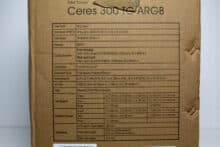
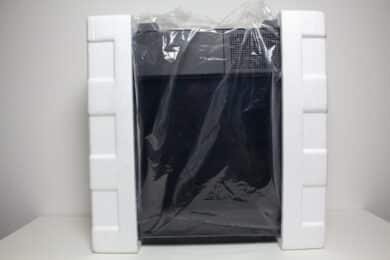

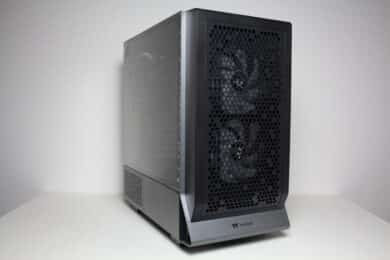

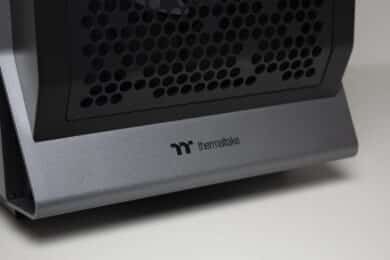

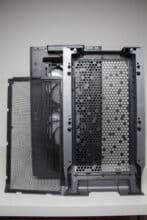

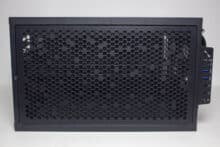



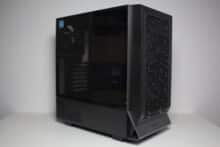
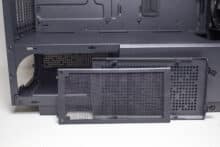


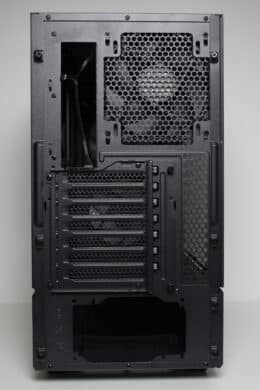
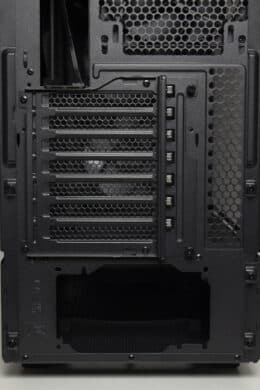




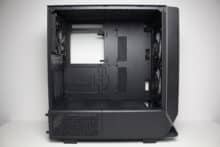
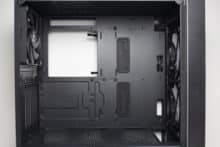
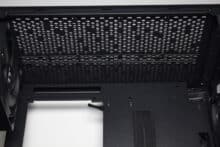
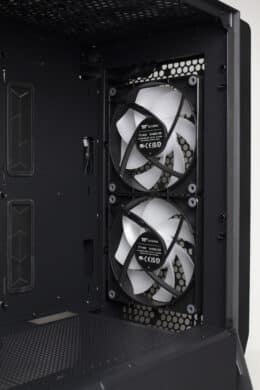


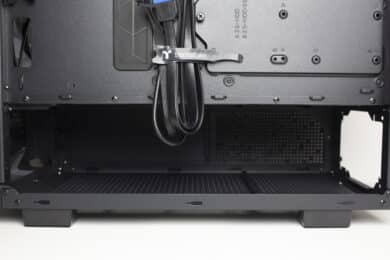
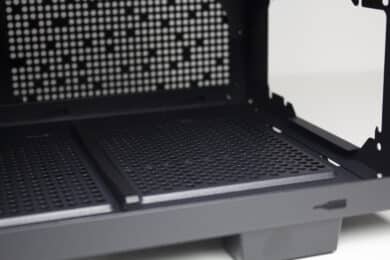
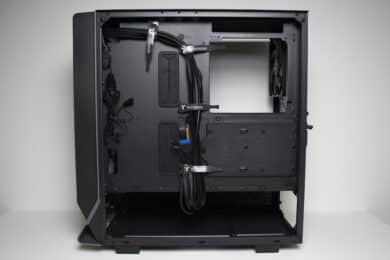
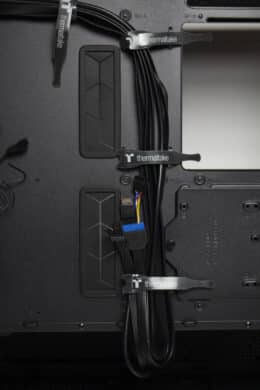
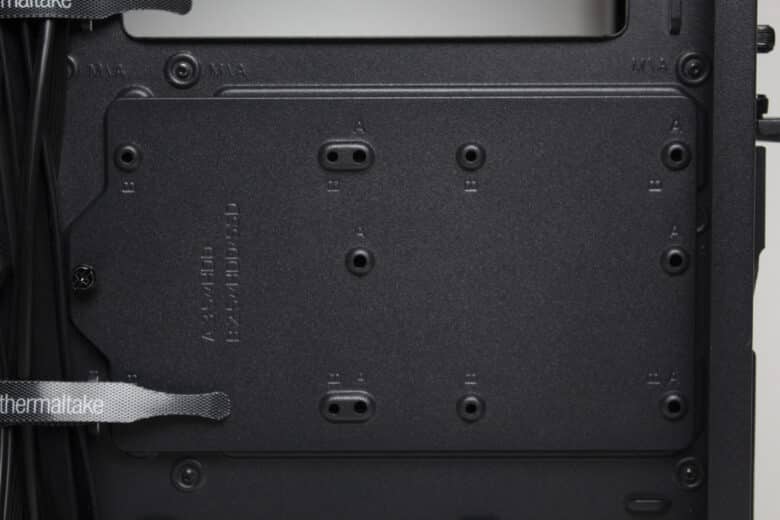

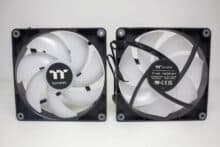
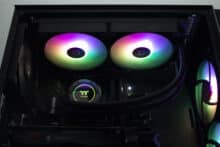
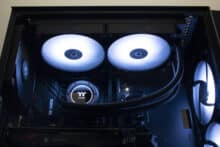
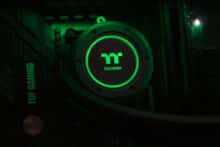
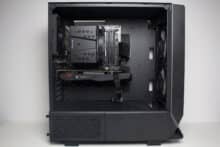


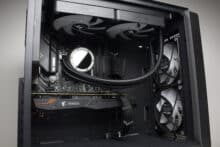

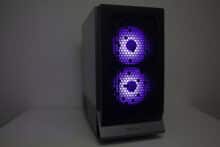
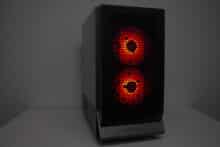


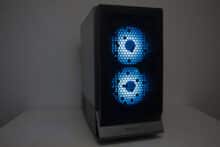
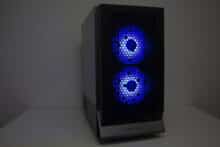

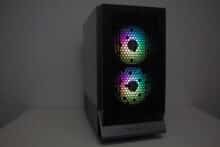



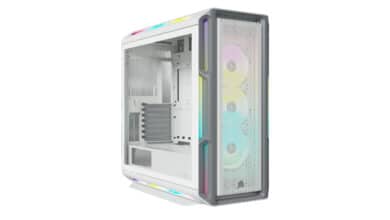
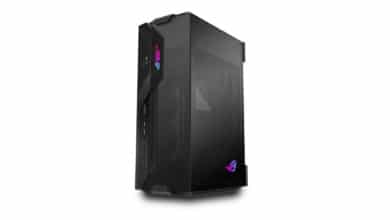
No replies yet
Neue Antworten laden...
Gehört zum Inventar
Beteilige dich an der Diskussion in der Basic Tutorials Community →